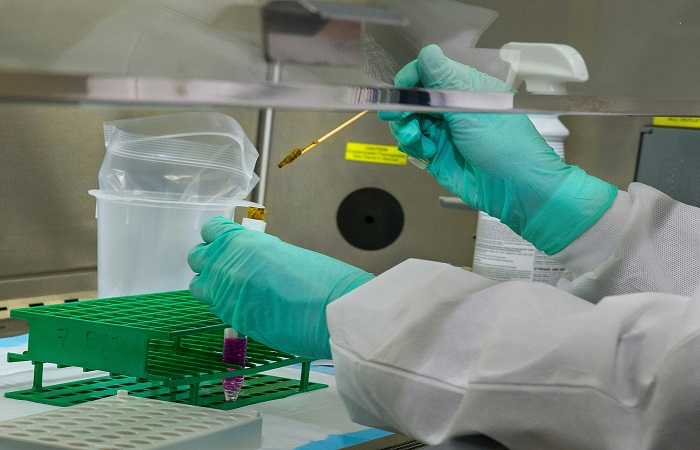When it comes to the fascinating world of proteins, some names like collagen or hemoglobin might ring a bell. But what about tenascin-C, more commonly known as TNC protein? This often-overlooked molecule plays a vital, if subtle, role in how our cells talk to each other. Let’s delve into the remarkable story of TNC protein and why it deserves more of the spotlight.
Tenascin-C (TNC), a complex glycoprotein integral to the extracellular matrix, stands as a molecular cornerstone with far-reaching implications in biological processes.
What is TNC Protein?
Before we jump into its importance, let’s cover the basics. TNC protein is a type of glycoprotein, a protein with carbohydrate molecules attached. It’s part of the tenascin family, which is found only in vertebrates. While it was first discovered in gliomas (a type of brain tumor), TNC protein is present in a variety of tissues, especially during embryonic development and tissue remodeling after injury. Its unique structure, featuring multiple domains, allows it to interact with a wide array of other proteins and molecules.
TNC, a modular glycoprotein, encapsulates the essence of extracellular matrix dynamics. Comprising epidermal growth factor (EGF)-like repeats and fibronectin type III (FNIII) domains, TNC’s structural complexity underscores its functional significance. Its expression, while subdued in adult tissues under normal conditions, becomes pronounced during embryonic development, hinting at a critical role in morphogenesis.
The Role of TNC Protein in Cellular Communication
So, what makes TNC protein special? Its claim to fame is being one of the first proteins shown to promote cell proliferation, differentiation, and migration, while also inhibiting these processes. This seeming contradiction is due to its context-dependent nature. Think of TNC protein as a cellular referee, directing the game based on the situation.
In embryonic development, TNC protein helps guide cells to their correct positions, much like a director coordinating actors on stage. It forms a crucial part of the extracellular matrix, the molecular scaffold surrounding cells, shaping the very architecture of tissues. After a tissue is injured, it signals cells to proliferate and migrate for repair, akin to a general rallying troops. But when the time is right, it can hit the brakes on this growth, ensuring everything stays balanced and healthy.
TNC Protein’s Role in Disease
Like many proteins, when TNC protein goes awry, disease can result. It’s been implicated in various cancers, where it can contribute to uncontrolled growth and metastasis. In the tumor microenvironment, TNC protein can even manipulate the immune system, shielding cancer cells from attack. In the nervous system, abnormal TNC protein levels have been linked to neurodegenerative diseases like Alzheimer’s and Parkinson’s. Research suggests it may influence the deposition of harmful protein aggregates that are a hallmark of these disorders.
On the other hand, researchers are exploring how to harness TNC protein’s powers for good. In regenerative medicine, it might be used to enhance tissue repair. For example, bioengineers are investigating how to incorporate TNC protein into biomaterials to promote healing. Its ability to influence the immune system also makes it a potential player in autoimmune disease treatment. By modulating inflammation, it could help restore balance in conditions like multiple sclerosis or rheumatoid arthritis.
Uncovering the Secrets of TNC Protein
Despite its importance, much about TNC protein remains a mystery. Scientists are still unraveling how it interacts with different cell types and signals to produce its varied effects. The specific molecular mechanisms behind its context-dependent behavior are a particular area of active research. With further research, we may uncover even more ways this protein influences our health and disease.
As we continue to study TNC protein, it’s clear this molecular unsung hero warrants more attention. By understanding how it conducts the cellular orchestra, we may uncover new ways to promote health and combat disease. The more we learn about TNC protein, the more we realize how vital it is to the complex symphony of life.
Applications of TNC in Biomedical Research
- Tissue Engineering and Regenerative Medicine
TNC’s unique properties position it as a promising candidate in tissue engineering and regenerative medicine. Scaffolds and substrates coated with TNC demonstrate efficacy in promoting cell adhesion, migration, and tissue regeneration, presenting themselves as valuable tools for therapeutic interventions in tissue repair.
- Cancer Therapeutics
The prospect of targeting TNC in cancer therapy opens new avenues. Strategies aimed at inhibiting TNC expression or disrupting its interactions with cancer cells hold promise in impeding tumor progression and metastasis. TNC-targeted therapies represent a burgeoning field in cancer research.
- Neurological Interventions
Manipulating TNC levels in the nervous system holds potential for therapeutic interventions in neurological disorders. Understanding TNC’s precise role in conditions such as spinal cord injury or neurodegenerative diseases is imperative for the development of targeted treatment approaches.
The multifaceted nature of the Tenascin-C protein makes it a captivating subject of study in the realm of molecular biology and medicine. From its fundamental role in cell adhesion and migration to its implication in diseases ranging from cancer to neurological disorders, TNC continues to reveal its complexity. Moreover, the involvement of TNC in various signaling pathways underscores its importance as a potential therapeutic target. As researchers continue to unravel the intricacies of TNC, its applications in biomedical fields, such as tissue engineering and cancer therapeutics, hold promise for the development of innovative and targeted treatments for a wide array of conditions.



